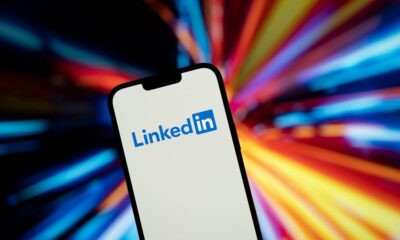What Do Financial Institutions Really Get Out of Social Media?

Toe-dipping into social wastes time and money because it lacks basic commitments like knowing what you are doing there and why. In fact, experts here and there are now suggesting that for some institutions, it’s OK to sit down with social and have that, “It’s not you, it’s me” talk, and then (gasp) break up.
Stop tweeting? Stop posting on Facebook? Give up “stories” on Instagram? That’s right. There are a ton of posts online from individuals saying how they’ve rediscovered life after getting off social media. Not many posts talk about companies ditching Twitter or Facebook altogether. But outbound social efforts are coming under scrutiny.
At the least, experts are saying that what financial institutions are aiming for in social media and how they use it should get a serious reexamination. Social best practices formed during this channel’s early days can be questioned now that paid social, for example, is part of the picture. Bragging points based on “likes” and simple tallies of followers seem less and less meaningful.
Why it Matters:
Worldwide social marketing is the number-two expenditure among all of the channels and tools used. There’s no time for fooling around anymore.
The Gartner Annual CMO Spend Survey, based on an international sample within a cross-section of industries, found the marketing dollar gets split as follows:
- Digital Advertising 13.5%
- Social Marketing 11.3%
- Website 10.4%
- Search Engine Optimization 9.9%
- Mobile Marketing 9.8%
- Offline Advertising 9.4%
- Event Marketing 9%
- Partner/Channel Marketing 9%
- Email Marketing 8.9%
- Paid Search 8.6%0
( Read More: The Financial Brand’s Power 100 Social Media Database )
Looking At Social Media Engagement As A Method and a Metric
Financial institutions’ use of social media varies widely among banks and credit unions. How seriously it is taken isn’t necessarily a matter of institution size.
One of the oldest mantras in social media, going back to a time when a handful of platforms wasn’t overtly monetizing their offerings, was that “selling” on social media was verboten, or, at least, in bad social media taste. The point of commercial interests coming onto social was to interact, to engage, with consumers and prospects. In a 2021 blog titled, “You’re Using Social Media All Wrong. Here’s What You Should Do Instead,” business owner Justin Bariso confessed that over years of using social, “I fell into a trap. I was using social media as a broadcasting tool. Mostly it was, ‘Here, check out something I wrote.’ Or, ‘Here’s what I think about topic X’.”
“I learned the best way to utilize social media is to focus on two questions: How can I start a conversation? What can I learn from a conversation?”
Many financial institutions’ effort fall into the same category, attempting to bring people to their websites to read content marketing pieces about financial products or even entertainment. In fact, a complaint aired in other blogs is that this use of social media has been undermined by the platform’s efforts to keep users in their “walled gardens.”
Bariso continues his argument for changing the way social is used back to the classic position. One-way communication merely imitates traditional advertising.
So he changed his attitude. “In time, I learned the best way to utilize social media is to focus on two questions: How can I start a conversation? What can I learn from a conversation?”
In its Social Media Industry Benchmark Report, Rival IQ studied social media practices using engagement as a ruler. The study looked at 150 companies selected at random in each industry examined. The firm added up multiple forms of interaction that can be measured, including retweets, shares, reactions, comments, favorites and likes. The sum was divided by total follower count to produce an “engagement rate.” Rival IQ found that banks and credit unions were ahead of the median engagement rate on Twitter and slightly under it for Facebook and Instagram.
The company suggests that calculating engagement rates this way controls for post volume and audience size and thus helps marketers gauge how their social efforts compare to competitors. By contrast, likes alone don’t prove much. “1,000 likes makes a huge difference to a brand with 2,000 followers, but is a drop in the bucket to a brand with 100,000 followers,” the report states.
An Inconvenient Truth:
The pursuit of social media engagement may only reflect the wishful thinking of a financial brand. Honestly, how much of what banks and credit unions put on their Twitter timelines is all that engaging?

REGISTER FOR THIS FREE WEBINAR
How to Innovate Quickly and Win Indefinitely
Moderator Mary Wisniewski sits down with Jeffery Kendall CEO of Nymbus, to explore how banks can quickly build next-generation digital banking products, services and experiences NOW.
Wednesday, March 24TH 2pm (ET)
Do People Really Need To Hear From You?
In a Forrester report, “Know Your Social Media Audience in 2021 — And If They Want To Interact With You,” analysts Jessica Liu and Sarah Dawson argue that all business users of social channels should conduct research to determine if their target audience consists of enough people who truly want a connection. Social, defined broadly to include social networks, blogs, ratings sites and more, offers places of interest to some consumers and not to others.
“For some brands, the investment may not be worth it if their target audience doesn’t want to hear from them,” the analysts write.
Forrester divides social media users into four groupings that institutions can consider for their own audience evaluation:
Social Skeptics: They rarely use social media, period, and they don’t want to connect with brands on social. Their average age: 55. (27% of U.S. population.)
Social Samplers: They don’t avoid connections with brands, but don’t look for them, either. They do appreciate social media engagement with brands. Their average age: 45. (29% of population.)
Social Supporters: They actually expect outreach from your brand and frequently connect with firms on social. Social media is part of their daily existence. Their average age: 38. (27% of population.)
Social Savants: These consumers constantly connect with brands on social. They tend to connect with a brand on social before making any other connection with it. In fact, two-thirds of them think it is cool to connect with brands on social. Their average age: 34. (17% of population.)
Something long said about Millennials and Gen Z applies here, that they expect brands to take a stand on societal issues. 64% of Social Savants “regularly purchase from brands/companies that align with my personal values,” while only 24% of Social Skeptics do so.
Read More:
- Is ‘Clubhouse’ The Next Social Media Platform for Financial Marketers?
- Gallery: ‘Going to the Dogs’ with Financial Social Media Posts
- Why Financial Institutions Need to Take LinkedIn Seriously
- Countering the Five Social Media Objections Bank Execs Always Raise
Social Listening: What You ‘Hear’ May Be More Important Than What You Say
The Supporters and the Savants could be a recruiting ground for a trend that is being seen, as described in Deloitte Insights’ Global Marketing Trends report: “Customer engagement is quickly becoming a two-way street where customers participate as brand ambassadors, influencers, collaborators and innovators.”
This departs from the professional paid influencer approach in favor of “real people.” Marketers can set up programs to engage with willing consumers to participate in product development, and more. Further, Deloitte points out, older consumers may be willing to take part in some efforts more than younger ones. Deloitte research found that consumers 46 and older have been willing to write online reviews, give advice about specific products and services, give input regarding product design and post content about a brand.
“Instead of shouting into the void and hoping for a response, companies can mine social media conversation to understand what consumers really want from them”
These ideas build on the concept of “social listening.” While social posting by brands is an outbound affair, the other way to use social media is to see what is being said on the various platforms about a specific bank or credit union, its competitors, the industry as a whole and more. A study by Talkwalker found that 28% of brands surveyed worldwide consider social media channels among their top three ways of interacting with consumers and monitoring their moods.
In fact, for some brands, social listening may be more valuable than outreach. “Instead of shouting into the void and hoping for a response, companies can mine social media conversation to understand what consumers really want from them,” writes Forrester’s Jessica Liu, in the report, “It’s OK to Break Up with Social Media.” This makes more sense, she says, than “thoughtlessly blasting more social ads or blindly propping up organic social accounts.”
The institution generally still needs accounts to be at the table, but the usage is different.
With the vast sea of traffic out there on the internet, what is bank or credit union going to track so it knows what people are saying about their brand?
A blog on Hootsuite’s site provides the following list of keywords and subjects as a starting point for monitoring:
- Institution brand name and social media “handles.”
- Product names, including common misspellings.
- Competitors’ brand names, product names and handles.
- Industry buzzwords.
- The institution’s slogan and those of rivals.
- Names of key people for the institution and competitors.
- Campaign names and keywords.
- Branded hashtags as well as competitors.
- Unbranded hashtags related to the industry.
Read More:
- Right and Wrong Ways to Use Social Media Storytelling in Banking
- How Social Media Closes the Physical Gap with Banking Customers
- Why Organic + Paid Social Is a Powerful Strategy for Financial Marketers
- Financial Marketing via Instagram Influencers Gaining Traction
Can ROI Separate Productive Social Media Activity From Time Wasters?
Ultimately upper management and the beancounters in financial institutions still look at social media expenditures and wonder what they are getting for their money. Marketers and social media chiefs strive to demonstrate that there’s a sound return on investment.
Many marketers, however, lack confidence in the numbers they are handing out, according to research by LinkedIn Marketing Solutions.
The study report suggests that, pressured to come up with something, many marketers provide management with key performance indicators, rather than real ROI measurement. The report contends that many attempts to provide ROI try to measure this too soon. Some sales cycles are measured in months, according to the study, so attempting measure ROI too soon leads to inaccurate conclusions.
Key Insight:
In social media, KPIs are highlights of what happens in each chapter of a book. By contrast, ROI is the equivalent of what happened after the entire story is over.
A blog by Hootsuite suggests that ROI not be considered in literal numbers, but in terms of what social media does for the overall marketing effort. A social listening effort that produces information that can be shared with Product Development is demonstrating its payoff, the blog contends.
“The value is in the intelligence gathered,” says the blog, “rather than in sales or revenue.”
Ultimately, to decide if social media is actually doing something for an financial institution, marketers and their internal clients have to agree on what it is they are trying to do. Only then can results be contrasted with the costs of staff, tools and other factors.
( Read More: 6 Ways Financial Marketers Can Improve Their Online Reputation )
Is It Time For A Social Media Breakup?
But let’s say everything is settled internally, all parties agree on what social media has or hasn’t accomplished for the bank or credit union, and a potential decision is looming to exit a platform or to give up outbound social media in general.
This can cause some indecision, but Forrester says institutions should not let social media hold them hostage. The “break up” report notes that some companies have simply become uncomfortable with the stew of sludge that some facets of the social media network have become.
Each institution can only react to its own circumstances and experience. But here’s one bit of food for thought. Forrester reports that 41% of Millennials and Gen Z in one of its surveys say they are spending less time on social media. Maybe not every bank or credit union actually has to be there.












